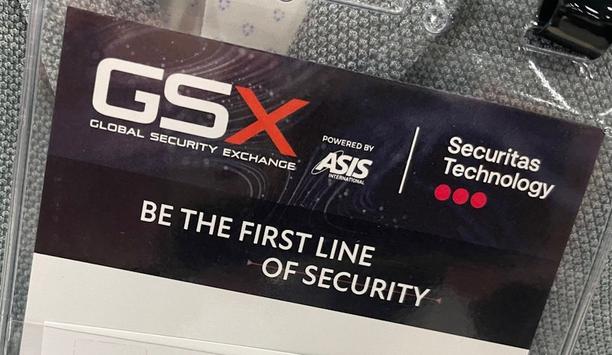Compliance with Joint Commission accreditation can impact hospital and healthcare safety and security decisions, and can even drive security system improvements at healthcare facilities.
An independent, not-for-profit organisation, The Joint Commission accredits and certifies nearly 21,000 health care organisations and programmes in the United States. Joint Commission accreditation and certification is recognised nationwide as a symbol of quality that reflects an organisation’s commitment to meeting certain performance standards.
The Joint Commission’s mission is to continuously improve health care for the public, in collaboration with other stakeholders, by evaluating health care organisations and inspiring them to excel in providing safe and effective care of the highest quality and value.
Security systems evaluation
But how are security and safety systems a factor in accreditation and certification by The Joint Commission? The Joint Commission does not require an organisation to have a specific type of security system, says John D. Maurer, Engineer, Department of Engineering, Certified Yellow Belt, The Joint Commission. Rather, an organisation is permitted to determine the types of security systems it uses based on the risks it identifies specific to its operations. Once an organisation identifies security risks that may impact operations, the processes put in place to address those risks are evaluated during a Joint Commission survey, including evaluation of the use and functionality of the types of security systems in place.
An organisation is permitted |
Based on the processes that are put in place, this evaluation will take into account the actions taken during a security incident in addition to the proper use and maintenance of the equipment specific to the setting and circumstances in which the security measures are implemented, says Maurer.
“Organisations should properly evaluate any equipment to determine how well it will serve its needs,” he says. It is recommended that the selection be conducted through a multidisciplinary team, including input from key stakeholders. Included with the selection process, organisations should review the operational needs of the security systems and related equipment so staff can use it properly and effectively. Additionally, the maintenance requirements should be reviewed in order to keep it functioning as it is intended. Of course, both the aforementioned points would involve training, and this could also be reviewed during a survey event to help determine the overall effectiveness of the system in place, according to Maurer.
Advantages of ‘Security by Committee’
After participating in a wide range of healthcare security deployments, security equipment manufacturers find that many of the most successful are led by healthcare executives that make use of a broad “security by committee” planning process. “Advisory committees that include representatives of all staff levels, and sometimes interested community volunteers, bring a unique blend of opinions to guide the planning and decision processes,” says Robert Laughlin, President, Galaxy Control Systems. “Over the years of working in this field, we have often heard legitimate staff complaints about systems that were installed without knowing how they would affect the staff,” he adds. “Because staff adoption is key to a successful installation, hearing a range of suggestions helps make these deployments successful."
 |
| The most critical areas are those in which the wealth of expensive medical equipment and pharmaceutical materials are stored |
Laughlin says a key challenge of healthcare security is to provide the right balance between, on the one hand, an open, friendly and welcoming facility that supports families and individuals during some of the most difficult situations of their lives; and, on the other hand, protecting the privacy and security of vulnerable people, expensive equipment, and valuable drugs and materials. Round-the-clock operation, a large and complex workforce, and a constant flow of unfamiliar visitors only compound the security challenge.
Higher level of access control in areas of critical risk
Healthcare campuses are vulnerable to a variety of security risks, but the most critical areas are those in which the wealth of expensive medical equipment and pharmaceutical materials are stored, says Scott Sieracki, CEO, Viscount Systems. These areas need to be heavily protected from theft and contamination 24 hours per day, 7 days per week, which can be exhaustive, expensive and hard to manage if any of these items are in transit.
"We are also experiencing higher |
Moreover, only employees with the highest security clearance and proper credentials are allowed access to these materials, and clearances can be changed at a moment’s notice within the facility’s main database. However, without real-time communication among card readers, access cards and Active Directory, these minute-to-minute decisions can open up opportunities for potential identity fraud and physical and/or logical security breaches, thus putting vulnerable patients, sensitive data and priceless equipment at risk.
Some specific areas of a hospital are especially vulnerable. “We are seeing higher levels of access control deployed in areas such as maternity and psychiatric wards, ICUs, operating rooms and onsite pharmacies that dispense controlled substances,” says Jim Stankevich, Global Manager – Healthcare Security, Tyco Security Products. “We are also experiencing higher demand for more and more integrations between security systems and facilities management systems.”
The combinations of the abilities of these devices mean, for example, that bracelets can be used to track physical locations of patients who may be mentally incapacitated or perhaps have Alzheimer’s disease, to make sure they are not in harm’s way. “We even have technology that can alert a nurse when a patient falls out of his or her bed, using the same principles used in infant abduction/infant tracking devices,” says Stankevich. “This technology is even used to track expensive medical equipment in real time in order to reduce theft, and also to track equipment that is in use or is possibly misplaced.”
Catch up on our Security in Healthcare series here
Discover how AI, biometrics, and analytics are transforming casino security
















































